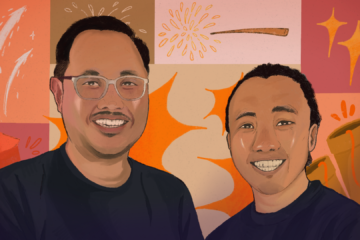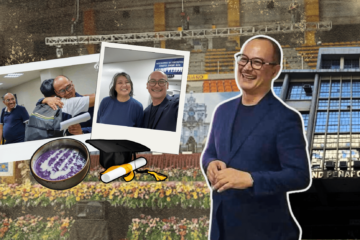THE ROAD to the secluded homes of her students with special needs is rough, but special education (SPED) teacher Zannah Solano does not view it as an obstacle.
In fact, She regards it as a way to achieve a goal, a means of reaching young minds who have physical limitations but who also have the right to dream. She has ensure that none of her students will be left behind.
Deviating from usual labels, Solano calls her students “LSEN,” short for learners with special educational needs. She thinks calling the learners “SPED” only promotes “stigma.”
Solano advocates an inclusive learning, believing every kid can become a functional member of society.
Heeding the call of inclusive education may be like diving into an ocean, which is vast and barely explored, but Solano said no strong current could sway her away from pursuing her mission.
Calling
Before becoming a SPED teacher at the Antipolo City SPED Center in 2021, Solano taught Music, Arts, Physical Education and Health (MAPEH) for 14 years at San Jose National High School.

As a MAPEH teacher, she imposed strict rules, implemented a rigid atmosphere, and instructed her students authoritatively to ensure their cooperation. This pedagogy, however, seemed ineffective to one of her students who kept having meltdowns during class back in 2013.
To address the problem, she called the child’s parents to ask if the kid exhibited similar behavior at home. As it turns out, the parents lacked awareness of the condition, leading to them denying it at first.
“I told the parents, ‘Look, if you’re going to cooperate with us, I will help you so that we can help the child. The child won’t be frustrated. You won’t be frustrated. And I won’t be frustrated as their teacher,’” Solano said.
Curious by the student’s “maladaptive behavior,” Solano looked after him, patiently observing him and attending to his needs— particularly when the kid was sent to the guidance office for “physically hurting” a classmate who bullied him.
However, since the school lacked facilities and services for students with special needs, the child’s condition was “overruled.”
“We figured that it’s about time that we [create] a program catering to children with the different behaviors or conditions, that’s what pushed me,” Solano said.
After convincing the parents to get their son assessed, Solano was informed that the child was diagnosed with Attention Deficit Hyperactivity Disorder or ADHD, a condition characterized by difficulty in paying attention, hyperactivity and impulsive behavior.
Solano discussed the student’s condition with his class adviser and the school guidance counselor, leading to the creation of an after-school SPED program in 2015. It marked the beginning of Solano’s advocacy for special education.
“There was something that could soften my hardened heart after all,” Solano said.
“It was my calling to become a special education teacher.”
Whenever the LSENs participate in class and creatively express themselves through singing or dancing, especially during skill enrichment activities, Solano described this as the “happiest moment” in her career, as some of her students are non-verbal.
This fulfillment of her calling, Solano said, could not be compared to anything else.
“There’s a certain happiness that those 14 years of teaching in regular classes cannot give me,” she said. “At the end of the day, I will close my eyes with satisfaction and fulfillment in my heart,” she said.
Acceptance
Solano described teaching LSENs as her “greatest achievement ever,” but victories are not without challenges.
Coping with the learners’ “disobedient tendencies” was still a challenge, Solano said, primarily when the learners frequently use violent physical contact to make their demands felt.
Demands from some parents also take a toll on Solano. According to her, some parents skip therapy and directly enroll their children in special education services for intervention.
“I have [difficulties] in terms of those parents who are expecting a lot from the teachers because the first thing you provide for students with these conditions is therapy,” the educator said.
“They are expecting us to do magic or [a] miracle. Well, in fact, we are not problem solvers. We are educating the children or the learners. However, we cannot give everything.”
The SPED teacher emphasized the importance of therapy as the first thing that children with special needs must undergo.
“Primary is the therapy. Occupational therapy, music therapy, speech therapy, physical therapy if the child is physically disabled or [has] cerebral palsy… School is secondary because you do not expect the child to learn functional academics,” she said.
To resolve challenges in learners’ studies, Solano sets “amicable settlements,” during meetings with parents, the principal and the guidance counselor.
Parents can understand their child’s needs, strengths and weaknesses by setting quarterly and annual goals.
“It’s really important for the parents to accept. Acceptance is number one,” Solano said.
Inclusion amid isolation

The height of quarantine restrictions during the peak of the COVID-19 pandemic made the already unique circumstances complex, particularly in the academic setting.
During the onset of the pandemic in early 2020, Solano was worried about how only seven out of the 18 students could attend online classes as technology was inaccessible to most families.
“The online classes were conducted only for one hour because [the students] will be bored. When they open their cameras, you can see them looking bored and exhibiting disruptive behaviors. Some would act rowdy or make tantrums,” she said.
Aside from the online instruction, parents were required to pick up learning activity sheets at school every week. Unfortunately, some parents could not do this regularly, prompting Solano to deliver the modules herself.
“I have to find out whether the students were actually answering their learning activity sheets. I have to reach out. So even if they lived far—in Binangonan, in Angono, in Taytay—I would reach even the secluded places,” Solano said.
Due to seclusion, one of her students with hearing loss regressed. The kid forgot basic sign language because nobody in his household knew how to communicate with him.
This prompted Solano to visit him frequently and learn the language herself. Just like the other students she visited, she saw the joy on her learner’s face upon reaching out.
“The child was overjoyed because finally, someone was able to understand him again,” she said.
“Nobody understood him because no one [in his family] knew sign language. That child, he always comes back to me even if I am not his teacher anymore because my influence, the impact of me reaching out, meant a lot to him.”
Solano’s experience reflects the story of over 5.1 million Filipino children with special needs. Unfortunately, the matter remains to be understudied, leading to an inadequate understanding of their concerns.
A 2021 study by the United Nations International Children’s Emergency Fund found the “inability to access essential services” to be a major concern for Filipino children with special needs, which involved child development services, habilitation and rehabilitation and general health.
This caused many families to struggle to provide support and intervention for their children with special needs.
Education for all
Over the years, the Philippine government has made considerable progress in protecting students with special needs by crafting policies designed to benefit them.
The Department of Education’s Order 21 issued in 2019 heeded the calls of Filipino children with special needs by adopting the K to 12 curriculum solely intended for LSENs. Republic Act 11650 signed last March 22 also required the establishment of at least one inclusive learning resource center in all municipalities to make education more accessible to children with disabilities.
Solano said school administrators play a significant role in promoting inclusive education, particularly with the LSEN community.
All teachers, regardless of major and year level, must always consider the individual differences of every student, she added.
“It starts with the school head […] because if they don’t support such programs, they will not include seminars and training in their budget,” she said.

With proper encouragement, Solano believes that her students’ disabilities could be turned into abilities.
“Like I always say: ‘Hangga’t may batang nais matuto, may gurong titindig at hindi susuko (As long as there is a child who wishes to learn, there will be a teacher who will teach and who will persist),” Solano said.
“Your heart is your foundation in teaching special education.” F




